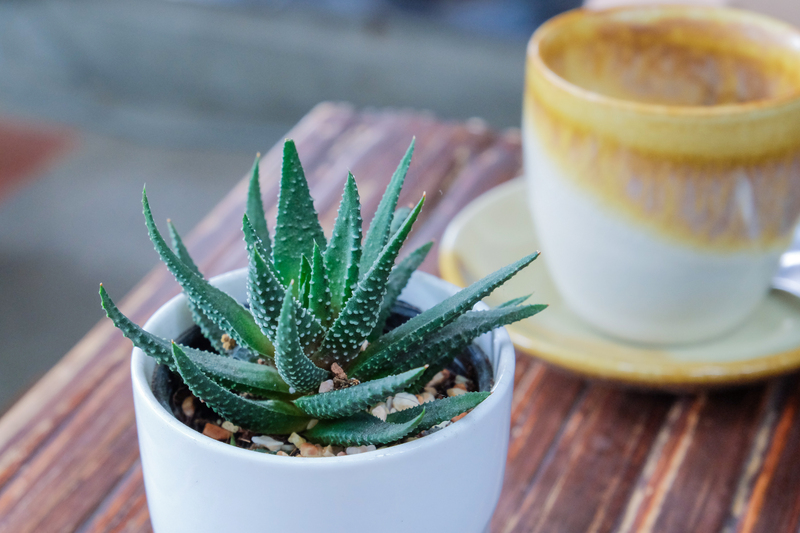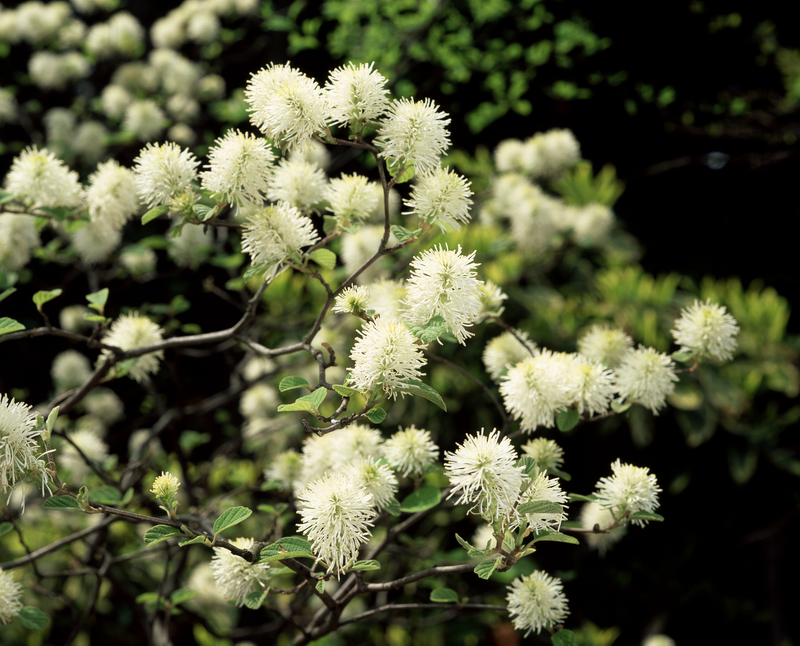Tackle Unwanted Weeds: 3 Strategies for Control
Posted on 04/06/2025
Tackle Unwanted Weeds: 3 Strategies for Control
Weeds are the bane of every gardener and homeowner looking to maintain a lush, beautiful landscape. They compete with your plants for water, nutrients, and sunlight, often outcompeting your desired vegetation. Learning effective ways to tackle unwanted weeds is essential for a thriving and healthy garden. In this in-depth guide, we'll cover three proven weed control strategies--from natural to chemical options--so you can enjoy a weed-free environment year-round.
Why Is Weed Control Important?
Uncontrolled weeds can severely impact the look and productivity of your yard or garden. Weeds not only detract from the visual appeal but also introduce a range of challenges:
- Competition for resources: They steal vital water, nutrients, and sunlight from your desired plants.
- Pest harboring: Many weeds provide habitat for pests and diseases that can threaten your garden.
- Reduced crop yields: In vegetable gardens, unchecked weeds can drastically decrease your harvest.
- Soil health issues: Dense weed coverage may affect soil structure and fertility over time.
- Allergenic effects: Some weeds, like ragweed, can trigger allergies and impact overall health.
Being proactive about weed management helps you maintain the integrity of your outdoor space and preserves the health of your plants.

Understanding the Enemy: Types of Weeds
Before diving into weed control strategies, it's crucial to understand the types of weeds you might encounter:
- Annual weeds: Complete their life cycle in a single year (e.g., crabgrass, chickweed).
- Perennial weeds: Live for multiple years and return from roots each season (e.g., dandelions, bindweed).
- Biennial weeds: Take two years to complete their life cycle (e.g., wild carrot).
Each type might require a slightly different approach for successful weed eradication. Now, let's dive into the top three strategies for controlling unwanted weeds in your landscape.
Three Proven Strategies to Tackle Unwanted Weeds
Strategy 1: Physical Weed Control (Manual and Mechanical Methods)
Manual or mechanical weed control is one of the most environmentally friendly ways to remove weeds and prevent them from spreading. This strategy is especially effective for small gardens and areas with limited infestations.
- Hand-pulling: For small clusters of weeds, nothing beats the age-old method of pulling them up by hand. Use gloves to protect your skin and try to extract the entire root, particularly for perennials.
- Hoeing: A sharp hoe is an invaluable tool for slicing weeds at the soil line. Hoeing is best done when weeds are small and before they set seed.
- Tilling: For larger areas, consider tilling the soil to uproot weeds. Be cautious, however, as tilling can also bring buried weed seeds to the surface, potentially causing more weeds to sprout.
- Mulching: Applying a thick layer of organic mulch--such as wood chips, shredded leaves, or straw--around your plants blocks sunlight, smothers weeds, and prevents seeds from germinating.
- Flame weeding: Specialized garden torches can quickly kill small weeds by heating them. Use this method with caution, especially in dry conditions.
Advantages of physical weed control:
- Safe for children and pets
- No chemicals involved
- Improves soil structure when organic mulch is used
Disadvantages:
- Labor-intensive, especially in large areas
- Requires ongoing maintenance
- Some weeds may regrow from leftover root fragments
Tip: The best time to tackle weeds physically is early in the season, before they get a chance to flower and set seed!
Strategy 2: Chemical Weed Control (Herbicide Applications)
For persistent or widespread weed infestations, chemical herbicides can provide quick results. There are two main types of herbicides for lawns and gardens:
- Selectives: Target specific weed types (e.g., broadleaf weeds) while leaving grasses or other plants unharmed.
- Non-selectives: Kill most types of vegetation and are ideal for clearing driveways, patios, or preparing new planting beds.
How to Use Herbicides Safely:
- Read the label thoroughly and follow all instructions for application rates and timing.
- Apply on calm days to prevent drift onto desirable plants.
- Wear protective clothing, including gloves, goggles, and long sleeves.
- Never use herbicides near water sources or edible crops unless the product is specifically approved for such use.
- Store all chemicals out of reach of children and pets.
Pros:
- Effective for large or difficult infestations
- Offers rapid and thorough weed eradication
- Can be tailored to specific weed types
Cons:
- Potential environmental impact if not used correctly
- Possible harm to beneficial plants if sprayed carelessly
- Some weeds may develop resistance to certain herbicides over time
Note: Always use the least toxic herbicide possible and combine chemical treatment with other weed management strategies for sustainable results.
Strategy 3: Cultural and Preventive Weed Control (Smart Gardening Practices)
The most sustainable long-term method to control unwanted weeds is to make your garden an unfriendly environment for them. This involves altering your gardening practices to favor your desired plants while suppressing weed growth.
- Dense planting: When flower beds or vegetable gardens are lush and filled with thriving plants, there's less space and light for weeds to establish.
- Crop rotation: Changing the location of crops each year can interrupt weed life cycles and prevent specialized weed species from becoming established.
- Proper lawn care: Mowing your grass high (3 inches or more) and watering deeply but infrequently encourages dense turf, which naturally chokes out many turf weeds.
- Cover crops: Planting cover crops like clover, vetch, or rye in the off-season shades soil, prevents erosion, and blocks weeds from germinating.
- Landscape fabric: Using barriers like weed-blocking fabrics under mulch provides added protection against persistent weeds in ornamental beds.
Benefits of cultural and preventive weed control:
- Reduces reliance on chemical controls
- Improves overall plant health and soil fertility
- Permanent reduction of weed pressure over time
- Enhances garden biodiversity and resilience
Challenges:
- Requires planning and consistent maintenance
- Some weeds may still break through, requiring spot treatment
Pro Tip: Regularly inspect your garden and remove weeds while they are small. Prevention is always easier than cure!
Integrated Weed Management: Combining Multiple Strategies
For the best results, experts recommend an integrated weed management approach, which combines several weed control tactics for maximum effectiveness. For example, you might use:
- Mulching and dense planting to block annual weeds
- Spot-treating persistent perennial weeds with an appropriate herbicide
- Regular physical removal of emerging weeds before they can spread
- Rotating crops and using cover crops to reduce soil seed banks
This multi-pronged strategy means fewer weeds each year and less reliance on any one method--including chemicals--making your landscape both beautiful and eco-friendly.
Eco-Friendly and Organic Weed Control Options
For those seeking to control weeds naturally without the use of synthetic chemicals, there are several effective solutions:
- Vinegar and salt sprays: Household vinegar mixed with salt and dish soap can be sprayed directly onto weed foliage for a natural burn-down effect. Use sparingly, as this solution can harm desirable plants and soil.
- Boiling water: Pouring boiling water over weeds is a quick, chemical-free method for walkways and cracks in hardscaping.
- Corn gluten meal: Acts as a pre-emergent, preventing the germination of weed seeds in lawns and gardens.
Remember: Organic remedies are most effective against weeds when they are small, and may require repeated treatments.
How to Prevent Weeds from Coming Back
Weed prevention is an ongoing process. Here are some key steps you can take to keep unwanted weeds at bay:
- Consistently mulch garden beds and replenish as needed
- Monitor and address bare soil areas where weeds can take hold
- Remove isolated weed plants before they flower or seed
- Maintain thick, healthy lawns and plantings
- Use landscape barriers in trouble spots
- Practice crop rotation and cover cropping
Avoid the most common weed mistake--letting seeds mature and spread!
Frequently Asked Questions on Weed Control
1. When is the best time to control weeds?
The ideal time is early spring, as soon as weeds start appearing. Eliminating them when young prevents them from setting seeds and spreading further.
2. Should I pull weeds after it rains?
Yes! Wet soil makes it easier to remove the entire weed root, which increases your chances of completely eradicating perennial weeds.
3. Can mulching alone control all types of weeds?
While mulching is highly effective against annual weeds and some shallow-rooted perennials, deep-rooted perennial weeds may still break through. Combine mulching with other strategies for best results.
4. Are chemical herbicides safe for vegetable gardens?
Some herbicides are labeled safe for use in vegetable gardens, but always read labels carefully--many are not meant for edible crops. When in doubt, opt for organic methods.
5. How often should I inspect my garden for weeds?
Weekly inspections are best, especially during the growing season. Early intervention is the easiest and most effective way to manage weeds.

Conclusion: Take Back Your Garden by Tackling Weeds
Weed control might seem like an endless battle, but by employing a combination of physical, chemical, and cultural strategies, you can effectively tackle unwanted weeds and maintain a healthy, stunning outdoor space. Remember, the key to ongoing weed management is persistence and vigilance--a little effort throughout the year ensures weeds never get the upper hand.
Whether you choose manual removal, strategic herbicide use, or preventive gardening practices, your efforts will yield a lush, virtually weed-free landscape you can be proud of. Happy gardening!



